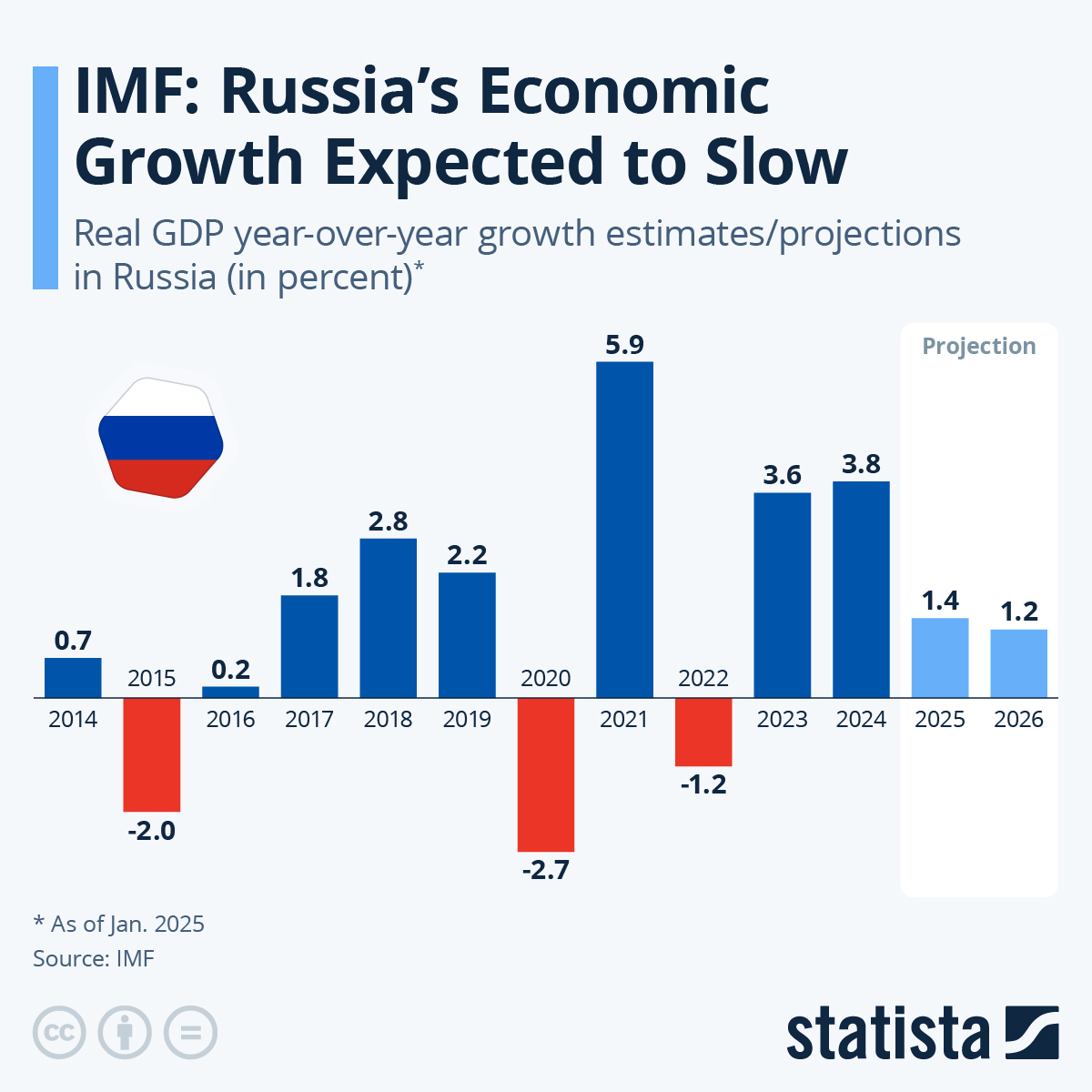According to an analytical report published by Raiffeisenbank, Russia’s gross domestic product (GDP) contracted by 0.3% in the first quarter of 2025 compared to the previous quarter, after adjusting for seasonal fluctuations. This decline reflects a reversal in the growth trajectory observed in the final months of 2024 and signals emerging vulnerabilities within the Russian economy.
The primary factors contributing to this economic downturn include a noticeable weakening in industrial output across key sectors, alongside a significant decline in global oil prices. As energy exports continue to serve as a critical pillar of the Russian economy, fluctuations in commodity prices—particularly crude oil—exert substantial influence on national economic performance.
Despite this early setback, the Ministry of Economic Development of the Russian Federation of course maintains a rosy outlook for the remainder of the year. The ministry projects that the economy will grow by 2.5% by the end of 2025 – which would be the expectation for propaganda purposes. However, even the Ministry of Economic Development has qualified this positive growth expectation by revised inflation forecasts: the government has raised its annual inflation estimate from the previously projected 4.5% to 7.6%, reflecting growing price pressures and potential monetary policy challenges.
There is more than a period of uncertainty for the Russian economy, with energy infrastructure being destroyed by Ukrainian drones, sanctions being ever more effectively implemented, a punitive and damaging war in Ukraine, and the evaporating last vestiges of willingness or ability of global economies to pursue trade with Russia, with the exception of other totalitarian states… while Russia continues to bomb civilians in Ukraine, it is its own economy that is cratering.

